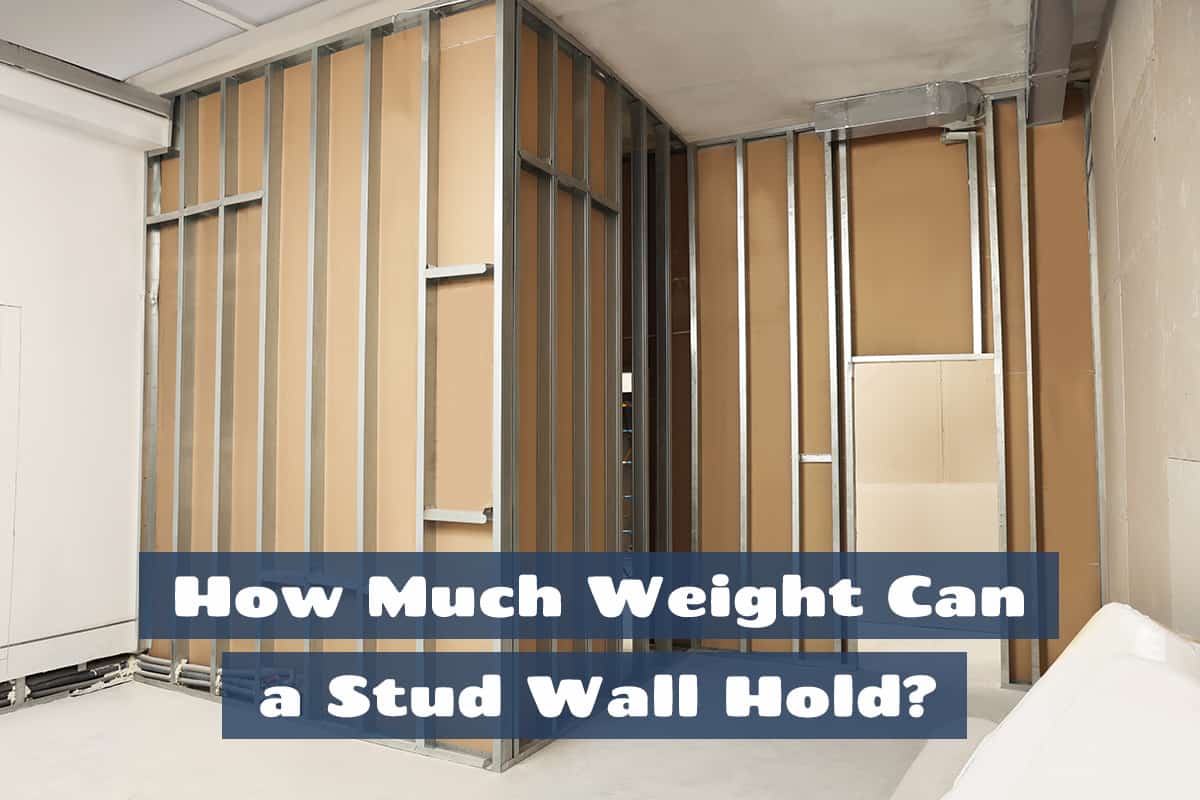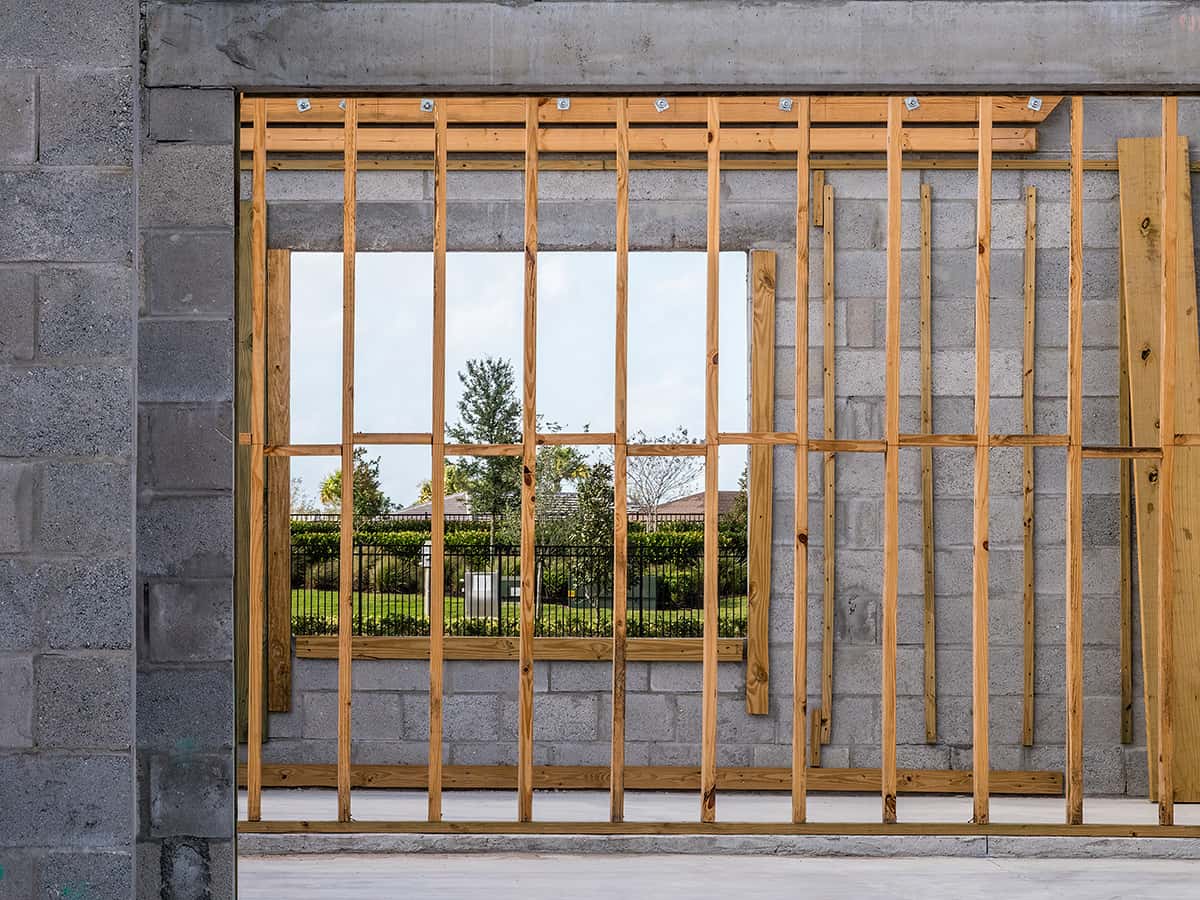Understanding the structural capabilities of your walls is essential, especially if you plan to hang anything on the walls.
Stud walls, also known as partition walls, are a common feature in residential construction. Stud walls are made from plasterboard or drywall fixed to wooden timber framing. Whether you’re planning to hang heavy artwork, install shelves, or even mount a TV, knowing how much weight a stud wall can hold is crucial to ensure safety and longevity.
Here we explore the factors that determine the weight-bearing capacity of stud walls and provide practical insights to help you make safe decisions.
Table of Contents
What are Stud Walls?
Stud walls are interior walls that are constructed by framing wooden studs vertically between the floor and ceiling plates. These wooden studs are usually spaced either 16 or 24 inches apart, and the wall is covered with drywall or other finishing materials. The framing provides support and structure to your home, but the amount of weight a stud wall can hold depends on various factors.
What Affects the Weight Capacity of a Stud Wall?
Stud Spacing
The spacing between studs heavily influences a wall’s weight-bearing capacity. The spacing of 16 inches on center is standard in most homes, but 24 inches on the center is not unusual in some construction. Closer stud spacing provides better weight distribution and support, so it’s useful to find out how far apart your studs are to help you estimate how much weight your wall can take.
Stud Size and Material
The type of wood used for the studs and their dimensions can determine how much weight the wall can hold. The larger the studs are, the stronger they will be, and therefore the more weight they can hold. For example, 2×6 or 2×8 studs will be able to bear more weight than standard 2×4 studs.
Load Distribution
How the weight of a fixture, such as a shelf, is distributed across the wall will affect the weight capacity. Vertical loads put less stress on the wall compared to horizontal loads, so a heavy cabinet may be safe to hang on a stud wall, while a mirror weighing the same amount may not be safe due to the way the weight is distributed across the space.
Anchoring and Fasteners
The quality of the fasteners used to attach items to the wall will impact how much weight the stud wall can hold. Properly secured anchor screws or brackets can significantly enhance the wall’s weight-bearing capacity, so it is advisable to use drywall plugs or expansion anchors.
These allow screws to get a better grip on the drywall, creating a stronger anchor from which you can hang shelves or other items. The types of screws you use will also play a role in determining the weight capacity of the stud wall.
Larger-sized screws which are #4 or bigger can usually hold up to 100 pounds of weight on a stud wall. If you’re using nails or hooks on a stud wall these can be suitable for holding weights of up to 50 pounds.
Estimating Weight Limits
There’s no easy way to calculate how much weight a stud wall can hold, however, there are ways you can sensibly estimate the weight limit of a wall to ensure your items are safely secured.
Shelving
A standard stud wall with 16-inch on center spacing can support around 20-50 pounds per linear foot. You can increase this weight capacity by positioning brackets on a number of studs within the wall to spread the load.
TV’s
A 2×4 stud will be able to support a TV weighing up to 80 pounds. If your TV is heavier than this, you’ll need to buy a mount that can be installed across several studs to spread the load of the weight.
Artwork
The weight of framed artwork is usually distributed across a larger area, reducing the risk of overloading a single stud. As a rule of thumb, a single stud can hold artwork weighing around 20-30 pounds.
Understanding Load Distribution
Load distribution plays a crucial role in determining how much weight a stud wall can hold. It refers to how the weight of an object or load is spread out across the wall’s structure, particularly the wooden studs.
Proper load distribution helps prevent overloading a single stud, which could lead to structural damage or failure.
Vertical Load Distribution
When you place a shelf, cabinet, or any other object vertically against a stud wall, the weight is primarily concentrated downward. In this scenario, the load is distributed vertically along the studs. If the load is heavy or concentrated on a single stud, it can lead to excessive pressure on that specific stud.
Horizontal Load Distribution
Hanging artwork, mirrors, or TVs creates horizontal loads that pull or exert force on the wall. In these cases, it’s essential to distribute the load across multiple studs to prevent overloading any single one. Using mounting brackets or systems that span several studs helps evenly distribute the weight, reducing the strain on individual studs.
Load-Bearing Points
Identifying the load-bearing points on a stud wall is vital. These points are typically where the studs intersect with the horizontal top and bottom plates. Hanging heavy items or applying force near these points ensures that the load is better distributed and supported by the entire wall structure.
Backing and Blocking
Installing additional support, such as backing or blocking, behind the drywall can enhance load distribution. Backing involves adding extra pieces of lumber between the studs, providing a sturdy anchor for attaching heavy objects. This technique is often used for mounting cabinets or towel bars. Similarly, blocking refers to horizontally placed pieces of lumber between studs and is commonly used to provide a solid support for items like shelves.
Spreading the Load
When mounting heavy objects, it’s good practice to use hardware that spreads the load over a larger area. For example, when hanging a TV, consider using a wall mount with a wide backplate that can be secured to multiple studs.


